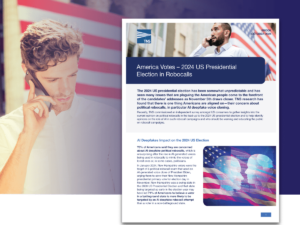TNS has released its milestone 10th Edition Robocall Investigation Report earlier this week. The biannual report analyzes robocall volume, top scams and trends and regulatory enforcement developments regarding these unwanted calls.
We often receive questions on how new robocall protection technologies, regulations and policies will impact consumers, businesses and carriers in the fight against robocalls. Here are our answers to some of the most common ones.
- What is the overall state of robocalls in 2023?
Unwanted robocall volume was down 11% in 2022. Total volume decreased to 70 billion robocalls from 78.9 billion in 2021. Both of those figures are far below the pre-pandemic peak of 106.9 billion in 2019.
Improvements have been made due to the expanded deployment of STIR/SHAKEN, alongside increased federal and state oversight efforts from the FCC and state attorneys general. With the final stage of STIR/SHAKEN implementation for smaller, Tier-3 carriers scheduled for this year, Americans should expect robocall volume to decrease throughout 2023.
- What makes TNS data different?
TNS directly supports more than 125 service providers in North America and serves four of the top seven US carriers and two of the top four wireless providers. With nearly 250 million active subscribers and superior access to the most amount of cross-carrier call events, TNS has unsurpassed ability to categorize and properly attribute incoming calls. This visibility is key to differentiating between legitimate robocall activity and scam.
- How has STIR/SHAKEN played a role in reducing robocalls?
As more carriers successfully implemented STIR/SHAKEN and regulators intensified their enforcement efforts in 2022, Americans saw robocall volume drop by 11% year over year compared to 2021. But TNS’ report identified room for improvement with call authentication accuracy that is critical to the framework’s success going forward.
Implementing STIR/SHAKEN is not a one-time event; it is a process to be built into day-to-day operations. Throughout 2023, carriers need to evolve their mindset from implementation to operationalization and adhere to proper attestation mechanisms to bolster STIR/SHAKEN efficiency.
- Where do the majority of robocalls come from?
VoIP-originated calls remain the largest portion of unwanted robocalls. Bad actors have pivoted to non-facilities-based and VoIP providers to unleash their scams on consumers. VoIP networks were responsible for 73% of all unwanted traffic in 2022, up from 61% in 2021 and 53% in 2020.
- What are the ramifications of unwanted robocalls and how does the telecom industry continue to fight them?
Unwanted robocalls have had an extremely negative impact on trust in voice calls: 75% of Americans refuse to answer calls to their wireless phone if they do not recognize the number.
Therefore, branded calling solutions have become an essential way to increase Americans’ call answer rate as they include critical brand information so consumers are better educated on who is calling them and can worry less about being scammed by bad actors.
According to recent TNS survey data,78% of consumers would be more willing to answer a call if the caller ID displayed the logo and name of a brand they recognize.
- What types of businesses benefit from branded calling solutions?
TNS Enterprise Branded Calling can help any legitimate business trying to increase answer rates and improve brand reputation. But it is most impactful for organizations in ‘high-touch’ verticals that rely on the voice channel to reach their customers in a timely and effective way, such as businesses in the healthcare, financial services and insurance, retail, education and hospitality and travel industries.
- And finally, can you tell us about some of the most notable robocall scams of 2022?
‘Pig Butchering’ scams start with the victim receiving a vague text message from an unknown number. Once the text is answered, the bad actor will attempt to build a relationship through these conversations to get the targeted victim to discuss investments.
The Amazon Refund Trick scam involve fraudsters impersonating Amazon sales representatives to convince victims to give them remote access to their accounts so they could issue them refunds. This allows the scammer to gain access to credit card numbers and other personal information.
As we know, Student Loan scams have been around forever but have become more sophisticated as scammers now use an interactive voice response (IVR) system to find people who will answer the call and interact with them. If the potential victim responds yes, they will likely receive a text with a link, or be transferred to a live agent who may try to obtain their credit card and other information.
To learn more about the outlook for robocalls in 2023, request a copy of the 10th Edition of TNS Robocall Investigation Report here.





